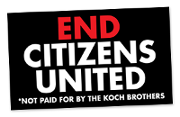Biblio
Filters: Term is Business [Clear All Filters]
(2005). International management: cross-cultural dimensions.
"Middle management often feels threatened by lower level autonomy." (p. 132)
(1990). Shame & Guilt: Masters of Disguise.
"Children who grow up in shaming environments quickly learn that one must blame or be blamed. There are very few compromises in shaming environments. It often feels like we are playing 'emotional hot potato' in our adult relationships...Passing the blame to someone else is our attempt to protect an already injured self from more wounds." (p. 82)
(2002). The Anxious Organization: Why Smart Companies Do Dumb Things.
"In organizations where anxiety is often expressed as blame, to avoid being blamed becomes a constant preoccupation. People attempt to preempt blame by sending each other memos recapitulating who did what and when. Their attention shifts from avoiding a potential problem to avoid being blamed for it." (p. 145)
(2002). Breaking Free from Stress: How to Find Peace When Life's Pressures Overwhelm You.
"People fear losing their jobs and worry about their performances. Too many leave their employment feeling drained and used up. Obviously this leaves little to give to others, particularly family." (p. 63)
(1986). Images of Organization.
"History may well judge that Taylor came before his time. His principles of scientific management make superb sense for organizing production when robots rather than human beings are the main productive force, when organizations can truly become machines." (p. 33)
(1989). Creative Organization Theory.
"As we all know, bureaucracies are supposed to operate 'by the rules.' They are places where individual initiative, enterprise, and creativity are supposed to take second place—if they are permitted at all!—to the policies and procedures that have been defined or authorized by those in charge of the organization as a whole.
Weber observed that the bureaucratic approach to organization mechanized the process of administration, exactly as machines had routinized production in industry. And his writings make frequent reference to how this process of mechanization squeezes out the human dimension." (p. 49)
(1998). Images of Organization: The Executive Edition.
"The groupthink phenomenon has been reproduced in thousands of decision-making situations in organizations of all kinds. It may seem overly dramatic to describe the phenomenon as reflecting a kind of psychic prison. Many people would prefer to describe it through the culture metaphor, seeing the pathologies described in all the above examples as the product of particular cultural beliefs and norms. But there is great merit in recognizing the prison-like qualities of culture." (p. 186)
(1995). Silent Sabotage: Rescuing Our Careers, Our Companies, and Our Lives from the Creeping Paralysis of Anger and Bitterness.
"At the organizational level, we must begin removing the hierarchical walls that we've built around us....We must move away from the concept that the boss is omnipotent and all powerful [sic] and move toward a more fluid organizational structure that favors a shared approach toward conducting business." (p. 57)
(1996). Psychology Applied to Work: An Introduction to Industrial and Organizational Psychology.
"In the evolution of work design, employees are becoming increasingly more controlled by situational factors as opposed to exerting control over their work environments. As the research on mental health and stress revealed, the reductions in self-regulation (feeling 'out of control') impairs psychological well-being (Murphy, Hurrell, and Quick, 1992)." (p. 324)
(2000). Patient number one: a true story of how one CEO took on cancer and big business in the fight of his life.
328. Abstract
"There is always an uneasy truce between scientists and salesmen. Scientists want their product to be absolutely perfect before allowing it to be sold; salesmen want to get it out the door where it can start generating income as soon as possible. On occasion the truce is broken, usually over budgetary and resource issues." (p. 78)
(2001). Business Is Combat: A Fighter Pilot's Guide to Winning in Modern Business Warfare.
"This book began with people and it ends with people, because ultimately they are an organization's greatest asset. It is individuals who innovate, not companies. It is individuals who persist against all odds, not corporate guidelines or a time clock."
(1997). A higher standard of leadership: lessons from the life of Gandhi.
"As a leader...you bear a great responsibility. If you set the direction, analysis and support will appear throughout the organization even if you are wrong. Those who are not in positions of power will find it difficult to disagree—to be truthful—because they fear for their careers and their futures." (p. 113)
(2000). The bully at work: what you can do to stop the hurt and reclaim your dignity on the job.
"Groupthink is George Orwell's term from 19841, the dark futuristic novel. Psychologists borrowed the term to describe a group incapable of critically assessing the pros and cons of a decision. Because the group members feel so tightly connected, so cohesive, they prefer to see only one side of an issue. They are easily led by a forceful leader and busy themselves by falling in line behind the boss and kissing up to stay in good favor. They become a mindless, overprotective clique when assembled as a group, putting the political goal of squashing dissent above all other matters."2
- 1. (1949). 1984.
- 2. According to the Wikipedia entry on groupthink, it wasn't Orwell, but rather William H. Whyte, Jr., who coined the term, as he writes in 1952:
"Groupthink being a coinage — and, admittedly, a loaded one — a working definition is in order. We are not talking about mere instinctive conformity — it is, after all, a perennial failing of mankind. What we are talking about is a rationalized conformity — an open, articulate philosophy which holds that group values are not only expedient but right and good as well."
Wikipedia: groupthink
(1994). 1001 Ways to Reward Employees.
"Everyone who works for Anheuser-Busch Companies, based in St. Louis, is entitled to two free cases of beer a month." (p. 214)
(1986). The art of creative thinking.
"Probably the greatest deterrent to creative thinking is in not recognizing that...we have a problem that needs a solution. At the other extreme are the innately creative who recognize problems and enjoy the challenge and possible rewards of solving them. Most of us fall between the two extremes. We recognize the problem but are at a loss to make a creative leap that will bring a solution." (p. 159)
(2001). 100 Simple Secrets of Happy People.
"If you see your work as only a job, then it's dragging you away from what you really want to be doing. If you see it as a calling, then it is no longer a toiling sacrifice. Instead, it becomes an expression of you, a part of you." (p. 98)
(2000). Applications in Human Resource Management: Cases, Exercises, and Skill Building.
"This article (in Business Week) identified a number of family-oriented policies and programs followed by 24 leading companies. Among the most significant of these were modifications in the company culture, executive development to enhance 'sensitivity', child care, sick care, women on the board, career development policies, family-leave policies, maternity leave with partial pay, modified work and family benefits, flexible benefits, hiring a 'pluralistic' workforce, job sharing, mentoring programs, and part-time professional and/or executive positions...
In response to employee criticism and the potential for negative publicity, the board of trustees made a decision to establish a 'Task Force on the Work / Family Interface.'" (p. 87)
In response to employee criticism and the potential for negative publicity, the board of trustees made a decision to establish a 'Task Force on the Work / Family Interface.'" (p. 87)
(1984). Forces of Production.
"For when technological development is seen as politics, as it should be, then the very notion of progress becomes ambiguous: what kind of progress? progress for whom? progress for what? And the awareness of this ambiguity, this indeterminacy, reduces the powerful hold that technology has upon our consciousness and imagination, and it reduces also the hold upon our lives enjoyed by those whose social power has long been concealed and dignified by seemingly technological agendas. Such awareness awakens us not only to the full range of technical possibilities and political potential but also to a broader and older notion of progress, in which the struggle for human fulfillment and social equality replaces a simple faith in technological deliverance, and in which people, with their confidence restored, resume their proper role as subject of the story called history." (preface xiv)
(2008). The Positive Power Of Negative Thinking.
252. Abstract
"I should make clear from the outset that I don't think defensive pessimism is the ultimate solution to the world's problems, or even to I problems of any particular couple or individual. Defensive pessimists are neither saints nor paragons, and defensive pessimism has both costs and benefits. People are different, and what works well for some people may not work well for others—that's the point. (And what works well in some situations may not work well in all situations.) The costs and benefits of any strategy depend on who is using the strategy and what the circumstances are."
(2014). Against Productivity.
Medium. Abstract
Productivity is a quality of perfect robots. Stories, adventures and all new things still have to come from messy humans.
(1995). Wellness 9 to 5: Managing Stress at Work.
"My encounter with job stress is part of an epidemic. In the United States, over 75 percent of all visits to primary care physicians are to treat stress-related complaints, and the vast majority of these complaints are job-related (Wallace, 1992). Work site stress can kill the very spirit of who we are as individuals. Our dreams, aspirations, creative goals, and hopes to 'make a difference' wither and die if the stress of daily work obscures our capabilities." (p. 5)
(C)2014 CC-BY-NC 3.0, workcreatively.org











 ]
]